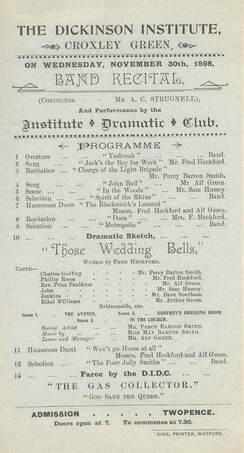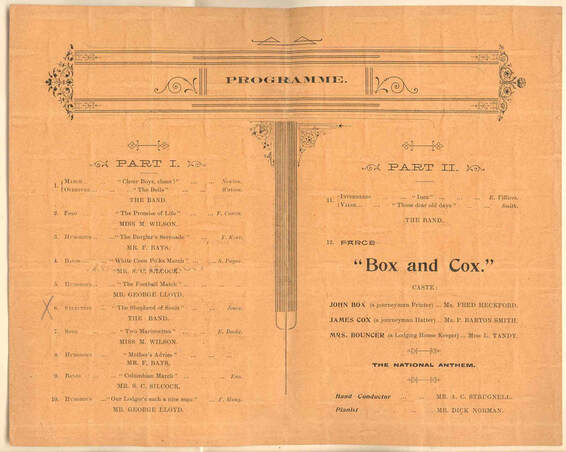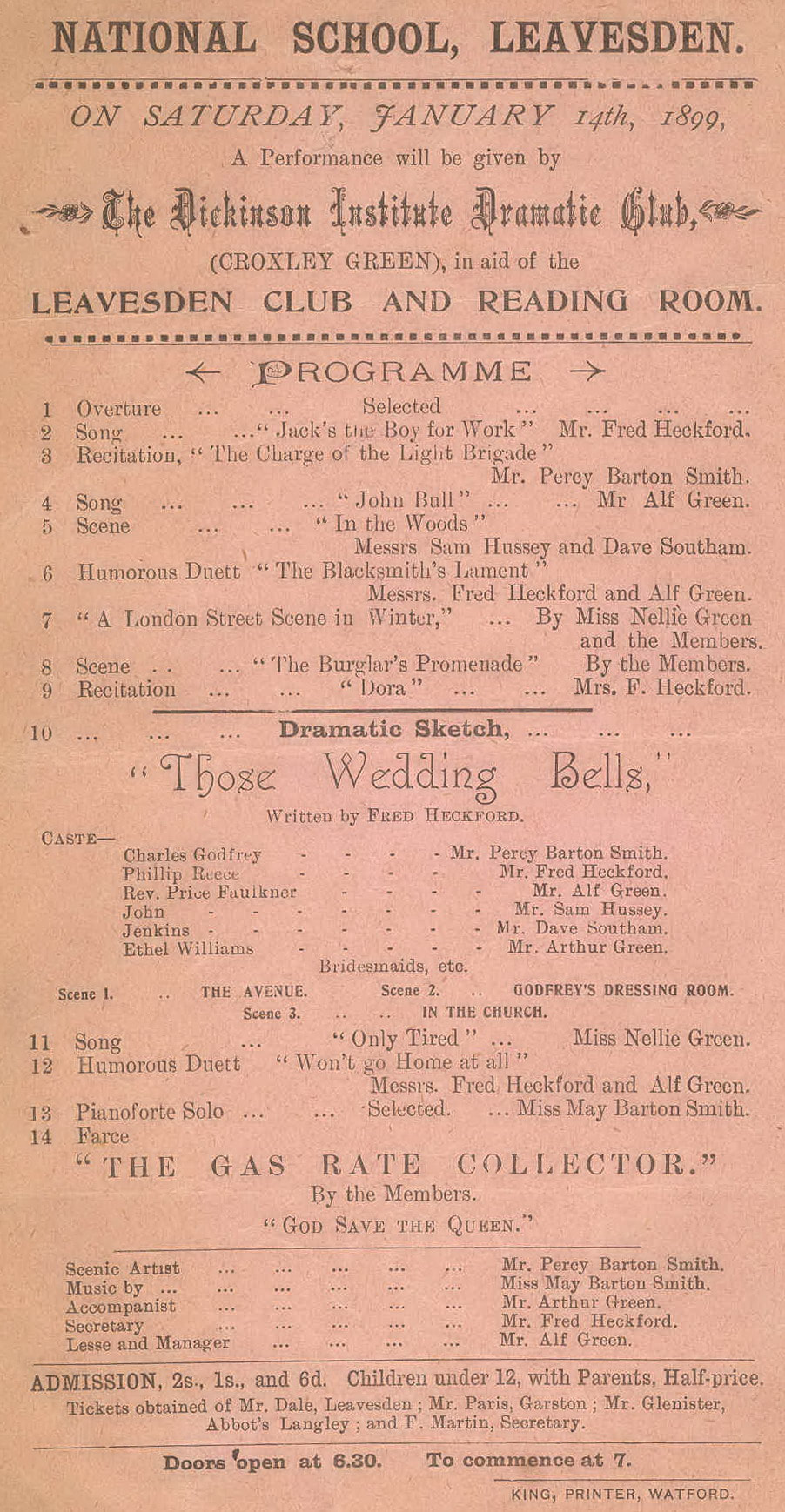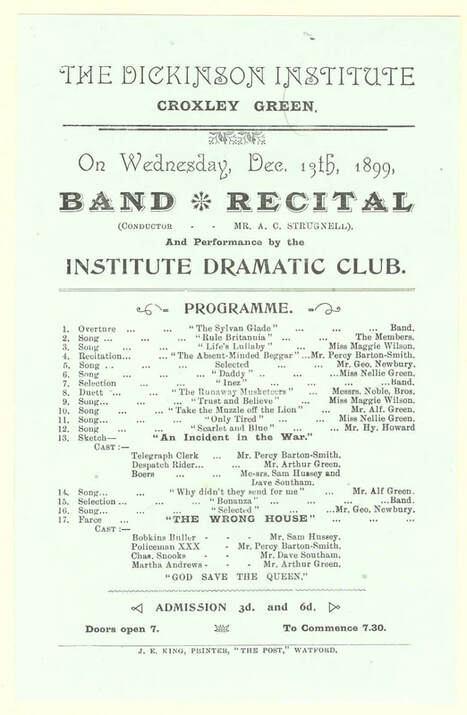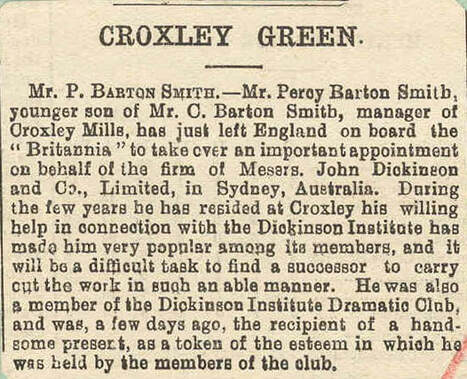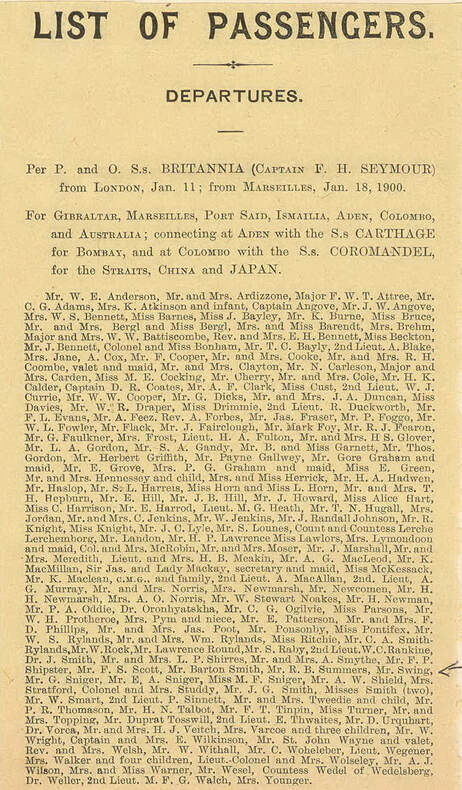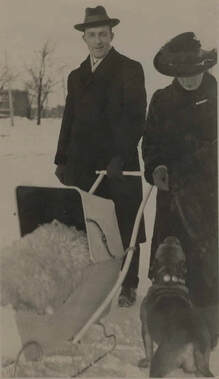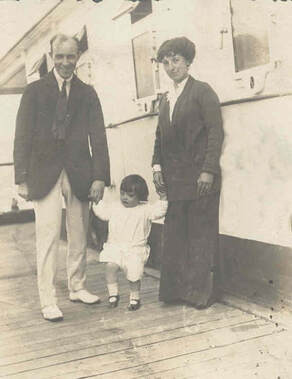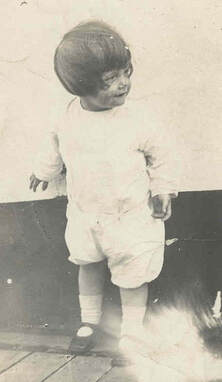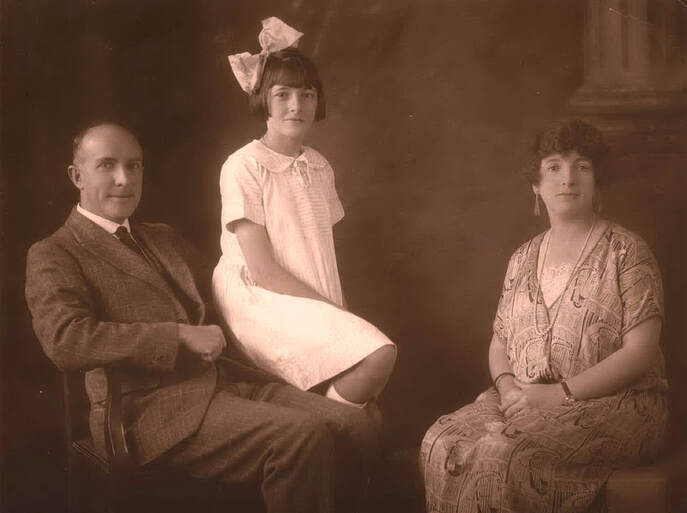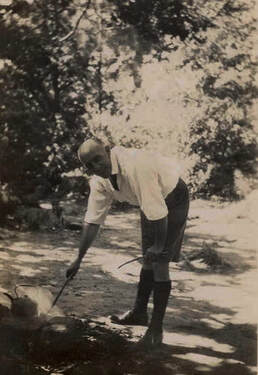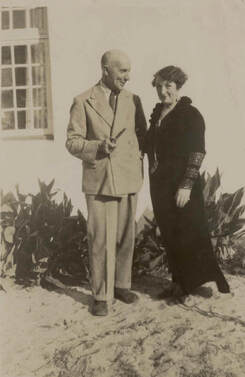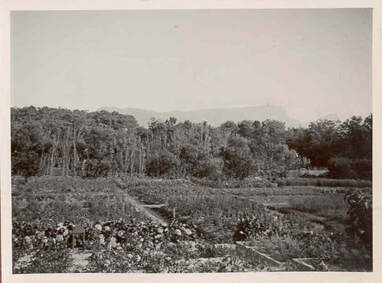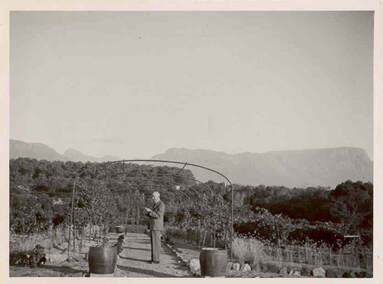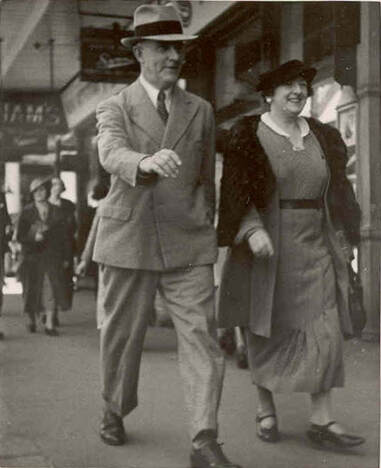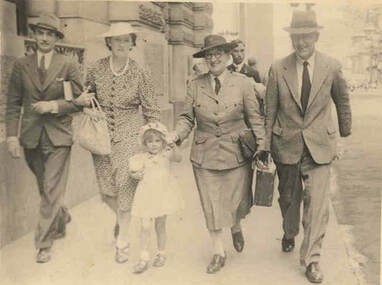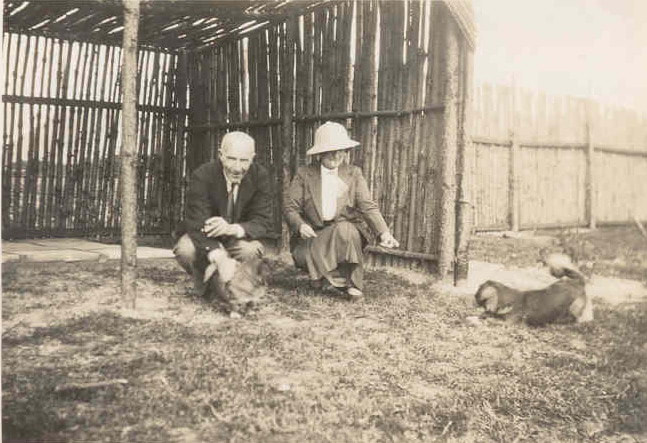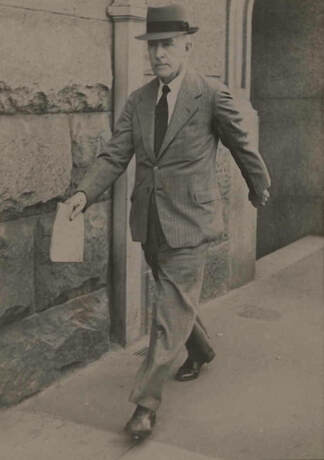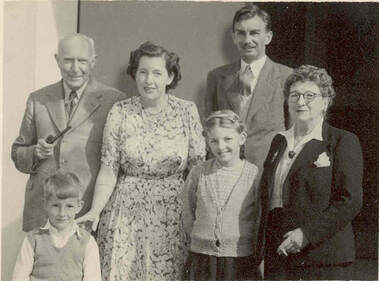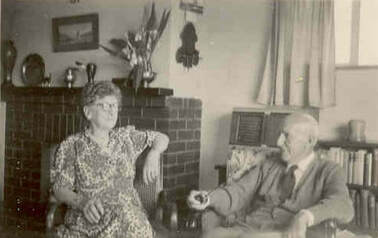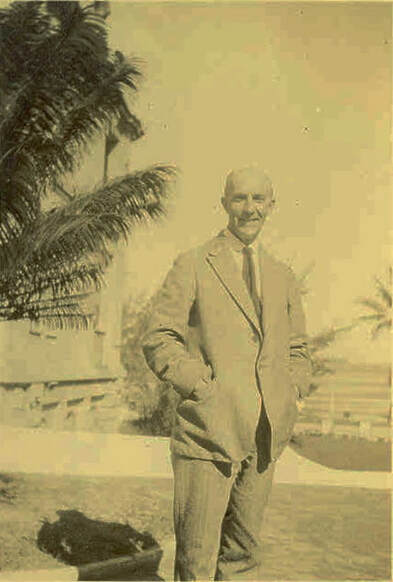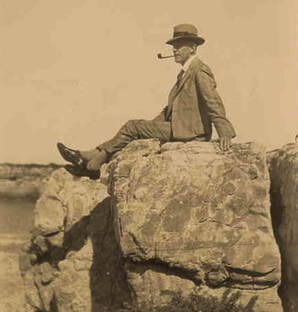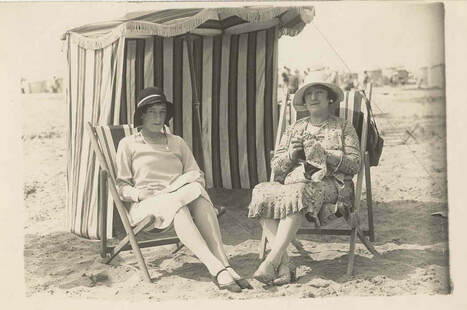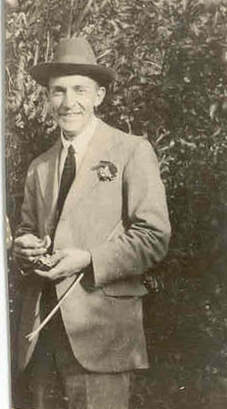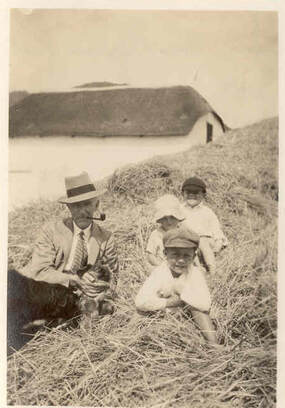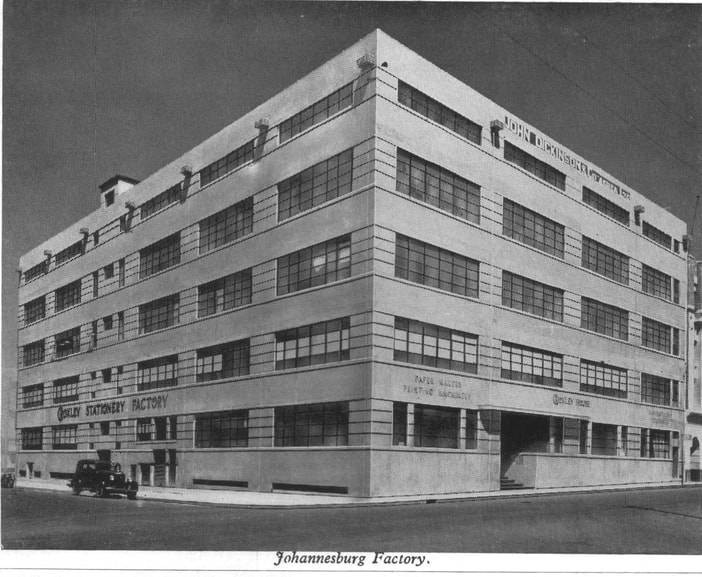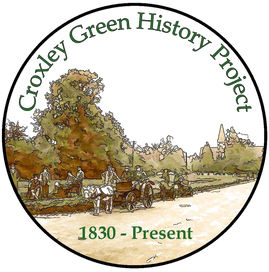Percy Barton-Smith 1880-1965
At the time when Charles Percy was born in 1880 his parents were still known as Charles and Mary Smith, not yet having adopted the addition of ‘Barton’. The 1891 census shows the family were living at 78 Carlton Road, Mile End Old Town, Stepney. Grandmother Mary and aunts Mary and Eliza Smith were living next door at No 80.
Charles Percy’s father Charles began his career in 1871 as an employee of John Dickinson as a Stationer’s clerk at their Head Office, 65 Old Bailey, London. By the time of the 1891 census he had been promoted to a Papermaker’s Manager. This would have been when he was between the ages of 26 and 36. There is no record of why Charles was promoted or any reference to which department he was appointed Manager.
It was about the time of this increased responsibility that Charles added the name ‘Barton’ to Smith. Family records show that Charles‘ maternal grandmother’s maiden name was Elizabeth Charlotte Barton (c1799-1879). It may be that this was the reason he chose it to be added to Smith, and from this date on Charles’ branch of the family were recorded as Barton-Smith. However, Charles’ parents Thomas and Mary Anne Smith and his siblings continued with their single name of ‘Smith’.
There is little known about Charles Percy’s early education, but when the family moved to Croxley Green it is possible he would have been of school leaving age and ready to seek employment. He began his career at the Croxley Green branch of John Dickinson, perhaps learning the business side of the paper making industry from his father. As there were now two Charles Barton- Smiths at the mill, it may have seemed sensible to reverse his Christian names and he became Percy Charles.
Croxley Green was fortunate to have a village hall built in 1895 the same year as the Barton-Smith family moved to Croxley Green. Charles Barton-Smith has been credited with encouraging the construction of the building which took the place of a converted cottage, 32, Milestone Field, that had initially served as ‘The Institute’. It is not known whether Charles Barton-Smith had made previous visits to Croxley Green to assess his new promotion within the company and view the accommodation which was to be provided for his family.
The new Institute offered many opportunities for the village and enabled the residents to set up a variety of groups and activities. Percy soon became involved with the Dramatic Club, taking on many leading roles with Fred Heckford, a chief chemist employed at the mill. His sister May Barton-Smith also joined and provided musical accompaniment, on the piano.
Charles Percy’s father Charles began his career in 1871 as an employee of John Dickinson as a Stationer’s clerk at their Head Office, 65 Old Bailey, London. By the time of the 1891 census he had been promoted to a Papermaker’s Manager. This would have been when he was between the ages of 26 and 36. There is no record of why Charles was promoted or any reference to which department he was appointed Manager.
It was about the time of this increased responsibility that Charles added the name ‘Barton’ to Smith. Family records show that Charles‘ maternal grandmother’s maiden name was Elizabeth Charlotte Barton (c1799-1879). It may be that this was the reason he chose it to be added to Smith, and from this date on Charles’ branch of the family were recorded as Barton-Smith. However, Charles’ parents Thomas and Mary Anne Smith and his siblings continued with their single name of ‘Smith’.
There is little known about Charles Percy’s early education, but when the family moved to Croxley Green it is possible he would have been of school leaving age and ready to seek employment. He began his career at the Croxley Green branch of John Dickinson, perhaps learning the business side of the paper making industry from his father. As there were now two Charles Barton- Smiths at the mill, it may have seemed sensible to reverse his Christian names and he became Percy Charles.
Croxley Green was fortunate to have a village hall built in 1895 the same year as the Barton-Smith family moved to Croxley Green. Charles Barton-Smith has been credited with encouraging the construction of the building which took the place of a converted cottage, 32, Milestone Field, that had initially served as ‘The Institute’. It is not known whether Charles Barton-Smith had made previous visits to Croxley Green to assess his new promotion within the company and view the accommodation which was to be provided for his family.
The new Institute offered many opportunities for the village and enabled the residents to set up a variety of groups and activities. Percy soon became involved with the Dramatic Club, taking on many leading roles with Fred Heckford, a chief chemist employed at the mill. His sister May Barton-Smith also joined and provided musical accompaniment, on the piano.
On Saturday 14th January 1899 the Institute Drama Club went to nearby Leavesden National School to give a performance in aid of the Leavesden Club and Reading Room. A newspaper report gives an account of the successful event mentioning the group’s performance including those of Percy and his sister May.
On another occasion the Dramatic Club entertained at the Institute on the evening of Wednesday 13th December 1899 with performances and a Band Recital.
This could have possibly been one of Percy’s final appearances prior to his increased responsibility in the John Dickinson Company.
This could have possibly been one of Percy’s final appearances prior to his increased responsibility in the John Dickinson Company.
The John Dickinson Company’s Head Office had been seeking opportunities to trade and expand the paper-making business world wide. Joan Evans, historian of the Company writing in The Endless Web, mentions how both Charles Barton-Smith in 1891 and Charles Hope Little, the Manager of Croxley Mill, in 1898, travelled to New York regarding new business ventures. Throughout her account of the business expansion she details how much interest there was in having distribution branches as well mills in the Far East including India, Ceylon, China, Japan, Australia and South Africa. From as early as 1886 and for the next two decades many senior personnel were making visits to many of these countries.
A report/cutting from the local Watford Post, dated January 1900, states that Percy was leaving on a business trip to Australia. Having been with the company for such a short period it is remarkable that Percy was given this responsibility - there is no mention in the newspaper report that there were other more experienced members of the company with him. On the 11th January 1900 he set sail from London aboard the P & O SS. “Britannia” for Australia. He was just 22 years old. This trip is not mentioned in Joan Evans’ book, so perhaps, despite what the Watford Post wrote, it was not considered of major importance, but a chance for him to gain experience with an eye to a role in the future plans the company were considering.
A report/cutting from the local Watford Post, dated January 1900, states that Percy was leaving on a business trip to Australia. Having been with the company for such a short period it is remarkable that Percy was given this responsibility - there is no mention in the newspaper report that there were other more experienced members of the company with him. On the 11th January 1900 he set sail from London aboard the P & O SS. “Britannia” for Australia. He was just 22 years old. This trip is not mentioned in Joan Evans’ book, so perhaps, despite what the Watford Post wrote, it was not considered of major importance, but a chance for him to gain experience with an eye to a role in the future plans the company were considering.
January 1900 ‘Mr Percy Barton-Smith, younger [sic: he was actually the eldest] son of Mr C Barton-Smith, has just left England on board the “Britannia” to take over an important appointment on behalf of the firm of Messrs. John Dickinson and Co., Limited, in Sydney, Australia. During the few years he has resided at Croxley his willing help in connection with the Dickinson Institution has made him very popular among its members, and it will be a difficult task to find a successor to carry out the work in such an able manner. He was also a member of the Dickinson Institute Dramatic Club, and was a few days ago, the recipient of a handsome present, as a token of the esteem in which he was held by the members of the club.
A journey to Australia at this time could take up to approximately two months depending on the weather and the number of port calls. The ship that Percy travelled on was due to call at Gibraltar, Port Said, Ismailia, Aden, Bombay and Colombo.
A journey to Australia at this time could take up to approximately two months depending on the weather and the number of port calls. The ship that Percy travelled on was due to call at Gibraltar, Port Said, Ismailia, Aden, Bombay and Colombo.
Percy’s return date has not been found but on his return to England he met Hildegarde Webster who lived in Norfolk.
Hildegarde was born in April 1880 in Old Buckenham, Guithcross, Norfolk to parents Henry and Louisa. She had one brother Stanley Anthony and two sisters Violet Edith and Ethel Maud. Her father’s employment is recorded on the 1881 census as having a Grocery and Drapery business.
Percy and Hildegarde were married on the 7th July 1910 at the parish church of St Nicholas, Great Yarmouth. The family address was Homeleigh, 30, Camperdown, Great Yarmouth. This was just a few hundred yards from the seafront.
Their marriage entry records Percy and Hildegarde were both 30 years old. May Barton- Smith (Percy’s sister or mother), and Henry Webster, Hildegarde’s father, were the witnesses to the marriage.
A report in The Norfolk News 9th July 1910 gave a description of the occasion.
The wedding took place on Thursday at the parish church of St Nicholas, Yarmouth of Charles Percy Barton-Smith eldest son of Mr and Mrs Charles Barton-Smith of Lindiswara Croxley Green Herts with Hildegarde eldest daughter of Mr and Mrs H Webster of Homeleigh Camperdown Yarmouth. The ceremony was conducted by the Rev J Cushing. The bride who was given away by her father wore a dress of white silk Ninon, trimmed with embroidered net and a large picture hat adorned with white feathers. Her diamond and pink topaz pendant was a gift from the bridegroom, and she carried a sheaf of Malmaison carnations. There were no bridesmaids. Mr. Frank Barton-Smith, brother of the bridegroom, was his best man. A reception was held prior to the ceremony. The honeymoon will be spent on the Continent, and the bride’s going-away dress was of cinnamon brown cloth trimmed with a black braid, and a picture hat with feathers. The presents numbered over a hundred.
As Hildegarde’s father was a Draper it is possible she had the opportunity and took advantage of a selection of fabrics and haberdashery for her outfits!
A report in the Eastern Daily Press gave a similar description for the occasion but with an added list of gifts the couple received from family, friends and the John Dickinson Company. The family gifts that were listed included,
Bride to Bridegroom, a gold watch and chain and Bridegroom to Bride, diamond and pink topaz pendant. Bride’s father and mother, house linen, silver and a cheque. Bridegroom’s father and mother, cheque and cutlery. Mr A Barton-Smith, (Percy’s younger brother Arthur), toast rack. Mrs T W Smith, table cover, Misses A & L Smith, case of silver jam spoons, Mr. & Mrs. S R Smith, picture, Misses Barton-Smith, (Percy’s sisters), pictures, Miss V E Webster, (Hildegarde’s sister), silver and glass biscuit box.
The female servants from the homes of both Percy and Hildegarde also gave gifts, Maids of Homleigh, vases, Maids of Lindiswara, rose bowl.
Several of the guests it would appear have the single name of Smith but there is no indication from the report in what way they were connected to either Percy or Hildegarde.
However, from other gifts received it would seem that after his visit to Australia Percy had already made business connections with the John Dickinson branches in South Africa prior to his marriage. There were gifts from two branches there as well as from Croxley Mill, and Head Office, Old Bailey.
Staff Messrs Paddon and Brock, Johannesburg, silver vase, Staff Messrs John Dickinson & Co., Johannesburg, case of pipes,(Percy was known to have used a pipe for tobacco) Staff Messrs John Dickinson & Co., Cape Town, silver jackall kaross, (sic: this refers to a type of jackal mainly found in central and southern Africa. A kaross is a cloak made from the hide of animals, with the hair left on without sleeves and traditionally worn by the native South African Khoikhoi and Bushmen). Staff Messrs John Dickinson & Co.,Croxley Mills, silver fruit and flower stand, Staff Messrs John Dickinson & Co., Export Depart. Old Bailey, case carvers.
After his marriage we assume Percy most probably continued with the company. A photograph titled ‘Canada 29th January 1913’ shows Percy and Hidegarde with a child’s pram. There is nothing to indicate if Percy was there as a representative of John Dickinson. It is known, however, that in late 1912 they had a daughter, Barbara May, who was probably snuggled under the fleece in the pram which, because of the weather conditions did not have wheels, but instead had runners.
The 1921 census record taken in June of that year shows Barbara was attending St Helen’s School, Eastbury Road, Northwood as a boarder. She was 8 years and 8 months old and her birth was recorded as ‘Montreal, Canada’. Using these dates one can assume her date of birth was some time in November 1912. This suggests that the family had been in Canada for some time, and also confirms the accuracy of the photograph.
Hildegarde was born in April 1880 in Old Buckenham, Guithcross, Norfolk to parents Henry and Louisa. She had one brother Stanley Anthony and two sisters Violet Edith and Ethel Maud. Her father’s employment is recorded on the 1881 census as having a Grocery and Drapery business.
Percy and Hildegarde were married on the 7th July 1910 at the parish church of St Nicholas, Great Yarmouth. The family address was Homeleigh, 30, Camperdown, Great Yarmouth. This was just a few hundred yards from the seafront.
Their marriage entry records Percy and Hildegarde were both 30 years old. May Barton- Smith (Percy’s sister or mother), and Henry Webster, Hildegarde’s father, were the witnesses to the marriage.
A report in The Norfolk News 9th July 1910 gave a description of the occasion.
The wedding took place on Thursday at the parish church of St Nicholas, Yarmouth of Charles Percy Barton-Smith eldest son of Mr and Mrs Charles Barton-Smith of Lindiswara Croxley Green Herts with Hildegarde eldest daughter of Mr and Mrs H Webster of Homeleigh Camperdown Yarmouth. The ceremony was conducted by the Rev J Cushing. The bride who was given away by her father wore a dress of white silk Ninon, trimmed with embroidered net and a large picture hat adorned with white feathers. Her diamond and pink topaz pendant was a gift from the bridegroom, and she carried a sheaf of Malmaison carnations. There were no bridesmaids. Mr. Frank Barton-Smith, brother of the bridegroom, was his best man. A reception was held prior to the ceremony. The honeymoon will be spent on the Continent, and the bride’s going-away dress was of cinnamon brown cloth trimmed with a black braid, and a picture hat with feathers. The presents numbered over a hundred.
As Hildegarde’s father was a Draper it is possible she had the opportunity and took advantage of a selection of fabrics and haberdashery for her outfits!
A report in the Eastern Daily Press gave a similar description for the occasion but with an added list of gifts the couple received from family, friends and the John Dickinson Company. The family gifts that were listed included,
Bride to Bridegroom, a gold watch and chain and Bridegroom to Bride, diamond and pink topaz pendant. Bride’s father and mother, house linen, silver and a cheque. Bridegroom’s father and mother, cheque and cutlery. Mr A Barton-Smith, (Percy’s younger brother Arthur), toast rack. Mrs T W Smith, table cover, Misses A & L Smith, case of silver jam spoons, Mr. & Mrs. S R Smith, picture, Misses Barton-Smith, (Percy’s sisters), pictures, Miss V E Webster, (Hildegarde’s sister), silver and glass biscuit box.
The female servants from the homes of both Percy and Hildegarde also gave gifts, Maids of Homleigh, vases, Maids of Lindiswara, rose bowl.
Several of the guests it would appear have the single name of Smith but there is no indication from the report in what way they were connected to either Percy or Hildegarde.
However, from other gifts received it would seem that after his visit to Australia Percy had already made business connections with the John Dickinson branches in South Africa prior to his marriage. There were gifts from two branches there as well as from Croxley Mill, and Head Office, Old Bailey.
Staff Messrs Paddon and Brock, Johannesburg, silver vase, Staff Messrs John Dickinson & Co., Johannesburg, case of pipes,(Percy was known to have used a pipe for tobacco) Staff Messrs John Dickinson & Co., Cape Town, silver jackall kaross, (sic: this refers to a type of jackal mainly found in central and southern Africa. A kaross is a cloak made from the hide of animals, with the hair left on without sleeves and traditionally worn by the native South African Khoikhoi and Bushmen). Staff Messrs John Dickinson & Co.,Croxley Mills, silver fruit and flower stand, Staff Messrs John Dickinson & Co., Export Depart. Old Bailey, case carvers.
After his marriage we assume Percy most probably continued with the company. A photograph titled ‘Canada 29th January 1913’ shows Percy and Hidegarde with a child’s pram. There is nothing to indicate if Percy was there as a representative of John Dickinson. It is known, however, that in late 1912 they had a daughter, Barbara May, who was probably snuggled under the fleece in the pram which, because of the weather conditions did not have wheels, but instead had runners.
The 1921 census record taken in June of that year shows Barbara was attending St Helen’s School, Eastbury Road, Northwood as a boarder. She was 8 years and 8 months old and her birth was recorded as ‘Montreal, Canada’. Using these dates one can assume her date of birth was some time in November 1912. This suggests that the family had been in Canada for some time, and also confirms the accuracy of the photograph.
It is possible Barbara was educated at St Helen’s School because the school was comparatively close to Percy’s family in Croxley Green. The school was opened in 1899 by Miss May Rowland Brown, previously a teacher at Northwood College. This school did not favour students whose families were connected with trade. At the age of 25 years Miss Brown was encouraged by local businessmen to start another school, Northwood High School, later renamed St. Helen’s School. As Barbara came from a family with a background in trade, she would have been ideally suited to be a pupil at St. Helen’s.
Percy and Hildegarde appear to have travelled extensively by ship throughout their marriage. The passenger records that are available on genealogy websites show that it is likely that they travelled on visits to their families as well as on business. Eventually Percy and Hildegarde settled permanently in South Africa and most of their trips took place between Cape Town and the United Kingdom. Their trips to England would no doubt have given them opportunities to visit family and friends, especially as at various times Hildegarde and Barbara made separate journeys as did Percy. The decision to make their home in South Africa may have been as a result of Percy’s many visits to Cape Town and the Dickinson branches that were established there.
As a married couple the earliest passenger list found starts with an outward journey from the Port of Southampton with the Union-Castle Steamship Co. Ltd., leaving on the 10th December 1920, They were on board the ‘SS Norman’ destined for Cape Town, South Africa, registered as Mr & Mrs P Barton -Smith. Percy’s occupation was listed as Agent, and both travellers were 40 years old. This date probably coincides with their decision for their daughter Barbara to attend St Helen’s School Northwood as a boarder as she appears in the 1921 census at the school, though of course it is possible she had started there earlier.
Another record shows us that on 10th August 1925 the family were leaving Natal, Cape Town for England aboard the ship ‘Gaika’ owned by the Union Castle Mailship Co. Ltd. They were travelling first class. Percy and Hildegarde were 45 years old and their daughter Barbara May 11 years. The family were due to disembark at the Port of London. Perhaps their intention was personal, to take Barbara back to school for the start a new term after a summer break in South Africa?
Just four months later, on the 4th December 1925 Percy was travelling alone from the Port of London to Yokohama on the P & O ‘Malwa’ His last address prior to leaving England on the passenger list was shown as, 7 Paternoster Square E. C. London. His destination was Singapore – his occupation again is Agent.
(Paternoster Square is very close to Head Office, Old Bailey)
On 27th September 1926 Percy was again travelling alone, arriving at Southampton on The Union Castle Mail Steam Ship ‘Kennilworth Castle’ and leaving from Cape Town. His address in England is given as Lindiswara, Croxley Green, Herts, which was his father’s house. This time his occupation is given as Representative. This visit would allow him to see his own family. It would appear that Hildegarde and Barbara had been visiting England too, as just three months later they were all travelling together, back to South Africa on 16th December in the Union Castle Company’s ‘SS Garth Castle’ from the Port of London. The passenger documents state Percy and Hildegarde were both 46 years old and Barbara 13 years. The address all three had left from was Lindiswara, Croxley Green, Herts.
Other visits to England must have taken place as Hildegarde and her daughter Barbara are listed leaving Southampton on board a Union Castle steamship, ‘Windsor Castle’ on 25th August 1933. They are returning from an East London address in England and travelling 3rd class.
The following year reveals that during a visit to England, Barbara had been staying at an address, 18 Sussex Gardens, London, W2, and was now returning to South Africa. On 1st February 1934 her return journey began at the Port of London travelling on the ‘Gloucester Union ’. This document shows she was 21 years old and her occupation was with the Civil Service. Four years later, Barbara was again in London, again staying at 18 Sussex Gardens. She is listed as leaving from the Port of Southampton on 9th January 1938, to return to Cape Town. She was recorded on the Passenger List as 25 years old and her occupation was given as a Speech Trainer. Barbara travelled First Class on the German Africa Lines ship ‘Pretoria’.
On 20th August 1938, Mrs H Barton-Smith was on board the ‘City of Exeter’ having embarked at the City of London port travelling to Madeira /Cape Town. Hildegarde’s age is shown as 57 years, and her last address in the UK was 62 Hatherley Court, London W2.
During the WW2 years between 1939-1945, many passenger ships were taken for war purposes for use as troop ships, transporting army personnel and equipment. Many were used for taking evacuees to safety in the USA and Canada. Percy and his family’s travelling opportunities would have been restricted, especially regarding the dangers from attacks and possible sinking by German ships or aircraft. Percy would also be of retirement age, so his business trips might well not have been so frequent.
However, after the war, when voyages by passenger ships could safely be restarted and visits became possible again, Percy, travelling alone, sailed on the ‘Almanzora,’ a ship of the Royal Mail Lines Ltd., leaving Port Said on 4th April 1946 for Southampton via Malta and Naples, arriving on the 17th April. Percy, now aged 67, gave his address whilst in England as 56, Runnymede, Merton Abbey, SW19.
In the following year on 15th May 1947, Hildegarde’s brother Stanley Anthony Webster and his wife Winifred Adela (nee Smith) travelled to South Africa on the ‘Athlone Castle’, perhaps to visit the Barton-Smiths? They returned two years later arriving on the 2nd April 1949 in Southampton aboard the ‘Dominion Monarch’. The ‘Dominion Monarch’ was a luxurious all first class passenger refrigerated cargo liner that would have given the couple a deluxe comfortable journey home.
The following year after their return home Winifred died on the 12th December 1950 age 62 years at Ringwood, Hampshire and Stanley in 1958 age 76 years.
No information is currently available as to when Percy retired from John Dickinson’s, but it seems that he decided to remain in South Africa after his retirement. He died on 19th September 1965 at Volks Hospital Cape Town, age 86 years and Hildegarde died the following year on 1st July 1966 at their home, Silverspruit, Citrusdal, Cape Province, South Africa.
Citrusdal is a town in the Olifants River Valley in the Western Cape province of South Africa. Situated at the base of the Cederberg mountains it is approximately 160 kilometres(100 miles) north of Cape Town. The area is mostly agricultural and dominated by citrus fruit farming, hence the town's name. In one of the passenger lists Hildegarde’s occupation was recorded as a farmer. Two photographs ( below) show a landscape that suggests a fruit farm. Did this belong to Percy and Hildegarde?
The following photographs are from the family archives and many were not identified. Where Percy and Hildegarde have been recognised their names have been added.
As a married couple the earliest passenger list found starts with an outward journey from the Port of Southampton with the Union-Castle Steamship Co. Ltd., leaving on the 10th December 1920, They were on board the ‘SS Norman’ destined for Cape Town, South Africa, registered as Mr & Mrs P Barton -Smith. Percy’s occupation was listed as Agent, and both travellers were 40 years old. This date probably coincides with their decision for their daughter Barbara to attend St Helen’s School Northwood as a boarder as she appears in the 1921 census at the school, though of course it is possible she had started there earlier.
Another record shows us that on 10th August 1925 the family were leaving Natal, Cape Town for England aboard the ship ‘Gaika’ owned by the Union Castle Mailship Co. Ltd. They were travelling first class. Percy and Hildegarde were 45 years old and their daughter Barbara May 11 years. The family were due to disembark at the Port of London. Perhaps their intention was personal, to take Barbara back to school for the start a new term after a summer break in South Africa?
Just four months later, on the 4th December 1925 Percy was travelling alone from the Port of London to Yokohama on the P & O ‘Malwa’ His last address prior to leaving England on the passenger list was shown as, 7 Paternoster Square E. C. London. His destination was Singapore – his occupation again is Agent.
(Paternoster Square is very close to Head Office, Old Bailey)
On 27th September 1926 Percy was again travelling alone, arriving at Southampton on The Union Castle Mail Steam Ship ‘Kennilworth Castle’ and leaving from Cape Town. His address in England is given as Lindiswara, Croxley Green, Herts, which was his father’s house. This time his occupation is given as Representative. This visit would allow him to see his own family. It would appear that Hildegarde and Barbara had been visiting England too, as just three months later they were all travelling together, back to South Africa on 16th December in the Union Castle Company’s ‘SS Garth Castle’ from the Port of London. The passenger documents state Percy and Hildegarde were both 46 years old and Barbara 13 years. The address all three had left from was Lindiswara, Croxley Green, Herts.
Other visits to England must have taken place as Hildegarde and her daughter Barbara are listed leaving Southampton on board a Union Castle steamship, ‘Windsor Castle’ on 25th August 1933. They are returning from an East London address in England and travelling 3rd class.
The following year reveals that during a visit to England, Barbara had been staying at an address, 18 Sussex Gardens, London, W2, and was now returning to South Africa. On 1st February 1934 her return journey began at the Port of London travelling on the ‘Gloucester Union ’. This document shows she was 21 years old and her occupation was with the Civil Service. Four years later, Barbara was again in London, again staying at 18 Sussex Gardens. She is listed as leaving from the Port of Southampton on 9th January 1938, to return to Cape Town. She was recorded on the Passenger List as 25 years old and her occupation was given as a Speech Trainer. Barbara travelled First Class on the German Africa Lines ship ‘Pretoria’.
On 20th August 1938, Mrs H Barton-Smith was on board the ‘City of Exeter’ having embarked at the City of London port travelling to Madeira /Cape Town. Hildegarde’s age is shown as 57 years, and her last address in the UK was 62 Hatherley Court, London W2.
During the WW2 years between 1939-1945, many passenger ships were taken for war purposes for use as troop ships, transporting army personnel and equipment. Many were used for taking evacuees to safety in the USA and Canada. Percy and his family’s travelling opportunities would have been restricted, especially regarding the dangers from attacks and possible sinking by German ships or aircraft. Percy would also be of retirement age, so his business trips might well not have been so frequent.
However, after the war, when voyages by passenger ships could safely be restarted and visits became possible again, Percy, travelling alone, sailed on the ‘Almanzora,’ a ship of the Royal Mail Lines Ltd., leaving Port Said on 4th April 1946 for Southampton via Malta and Naples, arriving on the 17th April. Percy, now aged 67, gave his address whilst in England as 56, Runnymede, Merton Abbey, SW19.
In the following year on 15th May 1947, Hildegarde’s brother Stanley Anthony Webster and his wife Winifred Adela (nee Smith) travelled to South Africa on the ‘Athlone Castle’, perhaps to visit the Barton-Smiths? They returned two years later arriving on the 2nd April 1949 in Southampton aboard the ‘Dominion Monarch’. The ‘Dominion Monarch’ was a luxurious all first class passenger refrigerated cargo liner that would have given the couple a deluxe comfortable journey home.
The following year after their return home Winifred died on the 12th December 1950 age 62 years at Ringwood, Hampshire and Stanley in 1958 age 76 years.
No information is currently available as to when Percy retired from John Dickinson’s, but it seems that he decided to remain in South Africa after his retirement. He died on 19th September 1965 at Volks Hospital Cape Town, age 86 years and Hildegarde died the following year on 1st July 1966 at their home, Silverspruit, Citrusdal, Cape Province, South Africa.
Citrusdal is a town in the Olifants River Valley in the Western Cape province of South Africa. Situated at the base of the Cederberg mountains it is approximately 160 kilometres(100 miles) north of Cape Town. The area is mostly agricultural and dominated by citrus fruit farming, hence the town's name. In one of the passenger lists Hildegarde’s occupation was recorded as a farmer. Two photographs ( below) show a landscape that suggests a fruit farm. Did this belong to Percy and Hildegarde?
The following photographs are from the family archives and many were not identified. Where Percy and Hildegarde have been recognised their names have been added.
|
|
The photographs of Percy and his family were taken from CD’s of the Barton- Smith family archives and copied by Richard Lee and Jim Hughes. The CD’s were donated by the late Jim Hughes family to the History Project. The original photographs are held by the ‘Three Rivers Museum Trust.'
Information used from
On line Genealogy sites including-
Family Search
My Heritage
Findmypast
Ancestry
https://www.frogmorepapermill.org.uk/paper-valley-people/
Endless Webb -Joan Evans
Mike Collins from Three Rivers Museum assisted with the research.
Information used from
On line Genealogy sites including-
Family Search
My Heritage
Findmypast
Ancestry
https://www.frogmorepapermill.org.uk/paper-valley-people/
Endless Webb -Joan Evans
Mike Collins from Three Rivers Museum assisted with the research.
